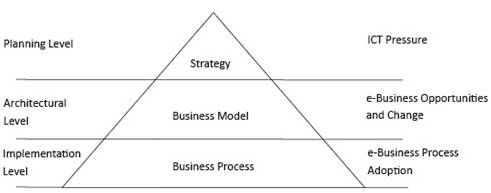The impact of online word of mouth on consumer behaviour in the cosmetics industry
China’s CURRENT Cosmetics Market
China’s cosmetics market is the third largest in the Asia-Pacific region and the seventh largest in the world (UK Trade & Investment, 2010). Since China’s economy has boomed in the past two decades, the ideology of purchasing cosmetics products has been spread, especially in the coastal regions. Even though the macroeconomic downturn in the last two years reduced total retail sales in various developed nations, China’s market still maintains double-digit growth, indicating the power of being the fastest-growing cosmetics market in the world (Li & Fung Research Centre, 2009).
According to the Li & Fung Research Centre (2011), in general, the major marketplace is dominated by a two brands tier structure: (1) foreign brands introduced by multinational firms such as Proctor and Gamble, L’Oréal, Estée Lauder and Shiseido (2) domestic brands launched by local SMEs. Most of the mid-high and high-end segments are occupied by foreign players, which have a relatively more comprehensive brand portfolio than their domestic counterparts. On the other hand, most of the domestic brands are operating as small businesses, and they are far less competitive when the foreign players are expanding their boundaries into the mass market (Mark, 2007). There is no doubt that foreign participants, whose products are well-known for reputation and quality, significantly enhance the fierceness of the e-competition in the mass market.
Regarding distribution channels in China’s cosmetics industry, although the online channel offers tremendous business opportunities and is growing annually, online transactions only occupy a small share compared with traditional distribution channels such as department stores (56.2 per cent), super/hypermarkets (20.2 per cent) and professional stores (Li & Fung Research Centre, 2007). Nonetheless, according to the China Internet Network Information Centre, in 2007 approximately 70 per cent of the Internet users were under the age of 30. This phenomenon implies that there is still huge room to earn profits through the adoption of e-business, and that an online platform provides a great channel to interact with younger customers.
Adoption of E-commerce
Critically, the Internet has been used as a pivotal platform to develop business regardless of whether firms are small or multinational. One of the key factors driving firms to adopt e-commerce is its marketing function (Sellitto, 2003). Although small firms are more sensitive to the adoption of new technology, which is primarily because of their finite resources, small enterprises are often effectively utilizing their websites to build up a strong and interactive relationship with clients (Martin and Matlay, 2003). According to Osterwalder and Pigneur (2002), it is helpful for companies to use e-business tactics when clearly defining e-business models. Additionally, such rigorously-defined models can assist firms to assess, alter, and even stimulate the business. The authors also indicated that it is necessary to realise and implement e-business models (see Figure 1: Business Logic Triangle) to reduce uncertainty when the business environment is increasingly dynamic (Osterwalder and Pigneur, 2002). This is mainly because:
- an e-business model could assist in identifying and realising the relevant elements in a particular area and the connections between those elements (Uschold and King, 1995)
- managers could easily communicate their understanding of an e-business with other stakeholders through the assistance of formalized models (Fensel, 2004)
- it is easier for business model planners to modify relevant elements from the existing models (Petrovic et al., 2001).

Figure 1: Business Logic Triangle
Source: Osterwalder and Pigneur, 2002
2 Social Commerce
There has been massive growth in the word of mouth industry (WOMMA, 2007), and the impact of social networks has played a significant role in the online retail and e-business environment. This evidence is also shown in the research done by Leitner and Grechenig (2008), which showed that five established social media (MySpace, Facebook, Orkut, Hi5 and Friendster) had experienced a phenomenal increase in terms of their daily reach from 2004 to 2008 (see Appendix 1), and that the e-commerce pioneers (Amazon and eBay) had an evident decline in their daily reach compared to the growth of MySpace (see Appendix 2). Obv
Order this paper